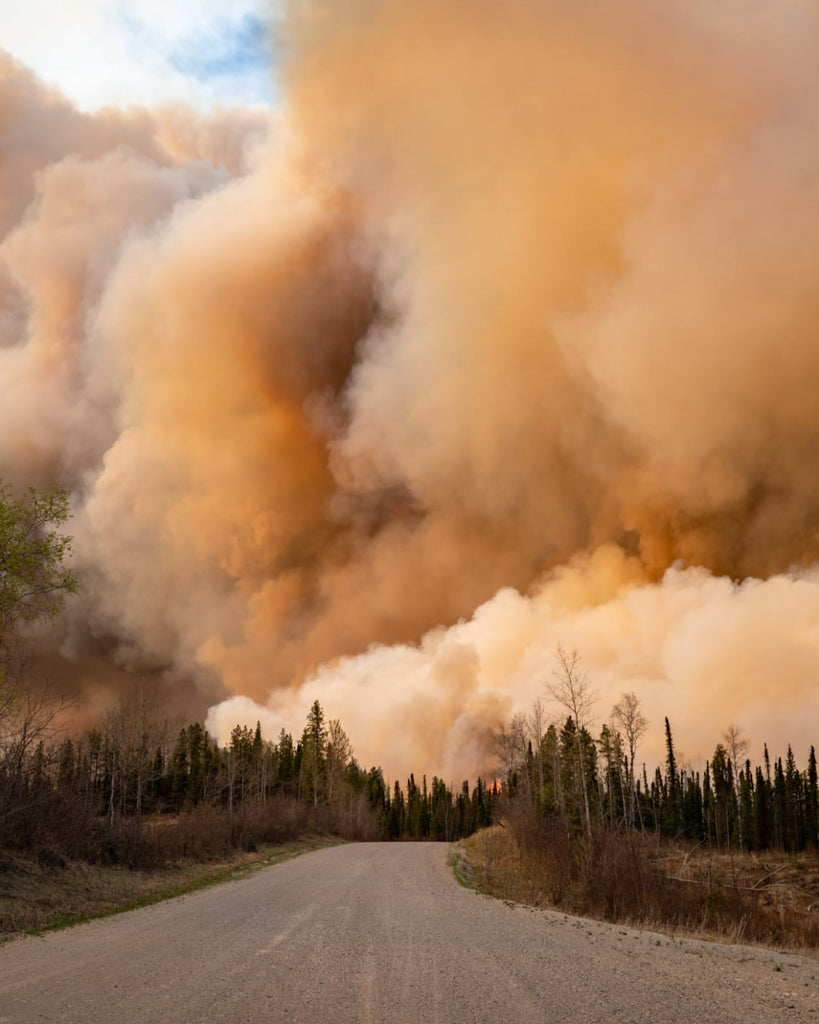Unmasking the Dangers: Alberta Wildfires and the Hidden Impact

Wildfires are a natural occurrence in the forests of Canada, but this year, there has been an unusually high number of fires in Alberta. In fact, there have already been 412 fires this season, compared to an average of 700 per year in the last decade. The wildfires have burned nearly one million acres of land, causing the province to declare a state of emergency. More than 24,000 people have been forced out of their homes and are currently residing in Edmonton, the province’s capital and second-largest city.
The fire has also affected the oil industry, as some producers have been forced to halt a small percentage of production. However, the most significant impact is on the health of residents and the environment. The smoke produced by wildfires is a dangerous mixture of gases and fine particles. The fine particles, called PM2.5 and PM10, are especially hazardous to residents.
What are PM2.5 and PM10?
PM2.5 and PM10 are two types of air pollutants that are commonly measured to evaluate air quality.
PM2.5 refers to particulate matter with a diameter of 2.5 micrometers or less. These particles are small enough to be inhaled deep into the lungs and can cause respiratory problems and other health issues. Sources of PM2.5 include combustion of fossil fuels, vehicle emissions, industrial processes, and dust from construction sites.
PM10 refers to particulate matter with a diameter of 10 micrometers or less. These particles are larger than PM2.5 and can still be inhaled but are usually trapped in the nose or upper respiratory tract. Sources of PM10 include similar sources to PM2.5 but also include larger dust particles from activities such as agriculture, road construction, and land-use changes.
Both PM2.5 and PM10 can contribute to haze and reduced visibility, as well as have negative impacts on human health and the environment.
What are the negative effects of PM2.5 and PM10 on human health?
1. Respiratory problems: PM2.5 and PM10 can irritate the respiratory system, causing coughing, wheezing, and shortness of breath. They can also aggravate asthma, bronchitis, and other respiratory conditions.
2. Cancer: PM2.5 has been classified as a carcinogen by the International Agency for Research on Cancer (IARC). Exposure to PM2.5 has been linked to an increased risk of lung cancer, and possibly other types of cancer.
3. Developmental and reproductive problems: Exposure to PM2.5 and PM10 during pregnancy has been linked to low birth weight, preterm birth, and other developmental problems in infants. These particles may also affect male and female reproductive systems.
4. Other health problems: PM2.5 and PM10 have been linked to a range of other health problems, including headaches, fatigue, and eye irritation. Long-term exposure to these particles may also contribute to the development of chronic diseases such as diabetes and Alzheimer's disease.
5. Cardiovascular problems: Exposure to PM2.5 and PM10 has been linked to an increased risk of heart attacks, stroke, and other cardiovascular problems. These tiny particles can enter the bloodstream and cause inflammation and damage to blood vessels.
How to reduce the risk of exposure to PM2.5 and PM10?
To reduce exposure to PM2.5 and PM10, it is important to take certain steps. Limiting exposure to pollution by staying indoors if possible. It is also recommended to use air purifiers with HEPA filters at home or in the office to remove particulate matter from the air. Wearing masks designed to filter out PM2.5 and PM10 can also help reduce the amount of pollutants inhaled. Reducing the use of fossil fuels and choosing clean energy sources can decrease air pollution levels.
How do air purifiers remove PM2.5 and PM10 particles?
Air purifiers remove PM2.5 and PM10 particles through HEPA filtration. The dense fibers of the filter trap and retain these microscopic particles as air passes through. Some purifiers may also utilize activated carbon filters or electrostatic precipitation to enhance particle removal.With these advanced technologies at work, air purifiers significantly improve indoor air quality and create a healthier living environment for individuals, especially those affected by the Alberta wildfires.
Conclusion:
While it may be difficult to remain positive during such a challenging time, it is important to remember the strength and resilience of the people of Alberta. As they continue to face this crisis head-on, we can offer our support by donating to relief efforts and spreading awareness of the benefits of air purifiers. By coming together and working towards a common goal, we can help to ensure the safety and well-being of all those affected by the wildfires in Alberta.


